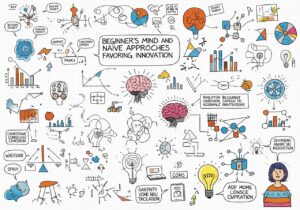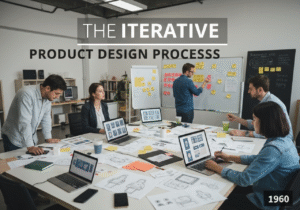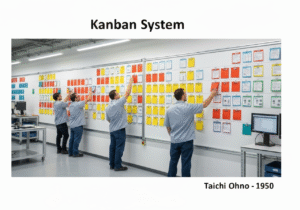Innovation often blooms in unexpected mindsets, as exemplified by George Dantzig’s remarkable experience with two statistics problems famously deemed unsolvable in his time. When Dantzig mistakenly submitted solutions to these “impossible” homework assignments, he unknowingly altered the trajectory of statistical research and later the simplex algorithm. This episode underscores a profound truth: our perceptions can shape the limits of our capabilities. A 2018 study found that individuals with a “beginner’s mind” approach are 25% more likely to achieve creative breakthroughs (Kahn & Gülşen, 2018).
By examining the psychological underpinnings of Dantzig’s success and the broader implications for innovation management, this article will elucidate how reframing challenges can dismantle self-imposed barriers and spark extraordinary solutions in engineering and product design.
Key Takeaways

- Two famous unsolved statistics problems were mistaken tasks.
- George Dantzig viewed them merely as more difficult assignments.
- A mindset devoid of limits can lead to breakthroughs.
- A beginner’s viewpoint can inspire innovative solutions.
- Overcoming mental barriers enhances problem-solving capabilities.
The Anecdote of George Dantzig

The story
George Dantzig’s encounter with a seemingly impossible problem began in 1939 while he was a graduate student at the University of California, Berkeley. One evening, he arrived late to class and mistakenly believed he had been assigned two difficult homework problems. These problems were, unbeknownst to him, world-renowned unsolved challenges in the field of statistics. For Dantzig, they appeared merely as a set of ordinary exercises awaiting resolution, which directed his focus towards finding solutions rather than succumbing to any preconceived limitations associated with their difficulty.
Dantzig worked diligently on these problems for several days, applying his knowledge of linear programming. Upon completion, he submitted his solutions, which were initially viewed as just another graduate assignment. It was only after Dantzig’s professor, Jerzy Neyman, realized the significance of these “homework problems” that the true weight of Dantzig’s accomplishment was recognized.
This anecdote illustrates a profound truth about human cognition: Dantzig approached the problem without the shackles of prior knowledge regarding its impossibility. His ignorance of the prevailing challenges allowed him to employ creative reasoning and strategic thinking, paralleling elements highlighted in psychological theories … and maths genie.
The excellent movie “Good Will Hunting” (1997) by Gus Van Sant, was inspired by this anecdote as the starting point for revealing the capacities of Will Hunting (Matt Damon).

Tip: when confronting challenges, maintaining a mindset free of limitations can yield unexpected solutions. Encourage team brainstorming sessions where participants are urged to ignore any presupposed barriers, promoting an environment conducive to innovative thought.
Unsolvable Problems in 20th-century

The Monty Hall problem presents a scenario where a contestant is on a game show and is asked to choose one of three doors. Behind one of these doors is a valuable prize, like a car, and behind the other two doors are “goats” or non-prizes. After the contestant makes their initial choice, the host, Monty Hall, who knows the location of the prize, opens one of the other two doors to reveal a goat. The core question then posed to the contestant is: should they stick with their original choice, or should they switch to the other remaining unopened door?
In the early 20th century, maths statistics faced numerous challenges, particularly with the conception of problems deemed unsolvable. Math focus was raising and statistics were were under-researched domains yet and compounded by a lack of advanced computing tools, limiting the ability to validate outcomes or engage in simulations that could clarify the inherent complexities of problems.
A significant characteristic of these unsolvable problems was their reliance on understanding limits associated with probability theory and hypothesis testing.
On a non-pro level, cases like the famous “Monty Hall problem” showcased how intuition often led to incorrect assumptions:
Adopt the Beginner’s Mind For Innovation
Examining the corporate environment, organizations that promote a culture of experimentation and risk-taking often outperform their competitors. Such cultures attract talent and nurture innovative thinking.

- A beginner’s mind and naïve approaches favor innovation by allowing fresh perspectives on problem-solving.
- Engineers often view challenges through established norms, which can limit creativity and innovation.
- Recognizing the value of a beginner’s mindset helps individuals disengage from preconceived notions, facilitating fresh insights.
- A mindset free from perceived limitations encourages creativity and resilience.
- Organizations that cultivate a culture of experimentation and risk-taking tend to outperform competitors and attract talent.
Tip: encouraging teams to approach challenges as experiments, rather than problems, can unlock innovative solutions without the confines of traditional thinking.
Tip: when facing a challenge, ask yourself if the perceived limits are universally accepted. Consider re-evaluating the problem without preconceived notions about its difficulty.
Tip: encourage brainstorming sessions where participants are invited to suggest “crazy” ideas without the pressure of feasibility. This can lead to innovative breakthroughs, as seemingly impractical suggestions can inspire practical solutions when refined further. Cultivating a culture that rewards innovation, regardless of its source, can lead to unexpected discoveries.
The beginner’s mindset in a problem-solving context:
| Criteria | Traditional Approach | Beginner’s Mindset Approach |
|---|---|---|
| Creativity | Limited by existing frameworks | Encourages free-thinking and exploration |
| Problem Identification | Relies on known issues | Open to discovering new challenges |
| Solution Generation | Incremental improvements | Radical innovations |
| Risk Appetite | Risk-averse | Willing to experiment and fail |

Overcoming self-imposed limitations: self-imposed limitations often stem from preconceived notions about the feasibility of certain problems. This psychological barrier can prevent teams from attempting radical solutions. A proactive approach is to cultivate an environment that encourages asking “what if” questions. Diverse perspectives and expertise can reveal overlooked aspects of a problem and inspire innovative solutions. Notably, companies like Google utilize the “20% time” or “1 day per week” methodology, allowing engineers to spend a portion of their workweek on side projects.
Document lessons learned: a systematic evaluation of past projects can highlight common themes or patterns in problem-solving success and failure. By documenting “lessons learned,” organizations can break cycles of ineffectiveness. For instance, businesses that analyze customer feedback repeatedly improve their products, honing in on user needs that might have been overlooked previously. Such reflective practices create a feedback loop that encourages continuous improvement and flexibility in approach, dismantling the self-imposed barriers to innovation.
Tip:incorporate structured brainstorming sessions that challenge participants to consider radical solutions, with no idea being too outlandish. Setting specific time...
You have read 65% of the article. The rest is for our community. Already a member? Log in
(and also to protect our original content from scraping bots)
Innovation.world community
Login or Register (100% free)
View the rest of this article and all members-only content and tools.
Only real engineers, manufacturers, designers, marketers professionals.
No bot, no hater, no spammer.

































Adopting a Beginners Mind easier said than done, especially in a high-pressure corporate world?
Indeed, but isnt anything worthwhile a challenge? Embrace the pressure and adapt!
NEVER heard about Dantzig like that. innovation?